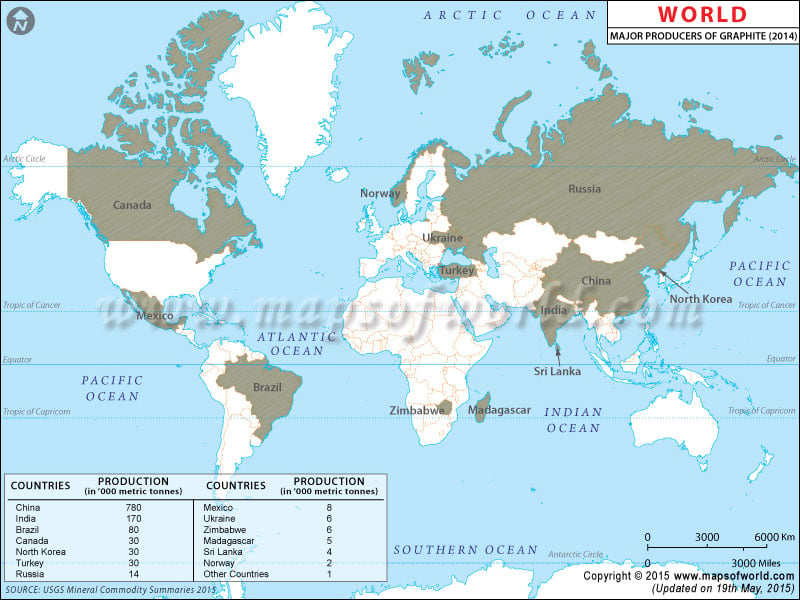Graphite is an opaque mineral useful in the formation of pencil lead. An allotrope of carbon, graphite is a good conductor of heat and electricity and very useful applications as arc lamp electrodes.
It is believed that graphite is a coal and is called meta-anthracite. As it is difficult to ignite, it is not used as fuel. There are three principal types of natural graphite: Crystalline flake graphite, amorphous and lump graphite. In nature, graphite is found usually in mechanical association with felspar, mica, quartz, pyroxene, rutile, pyrites, and apatite.
Most of the graphite occurs in metamorphic rocks as a result of metamorphism. However, it can also be found in igneous rocks and in meteorites. Almost every country has graphite reserves in abundance. In Ceylon, the USA and Mexico, the mineral is obtained by underground mining.
It is also obtained by hydraulic method in some countries like Malagasy Republic.
The World Map of graphite producers shows a list of a dozen countries holding the key position in graphite production. As shown in the map, China is the largest producer of graphite in the world; in 2015 the country produced 800 thousand metric tonnes of graphite.
China is followed by India producing 170 thousand metric tonnes of graphite. The third place is occupied by Brazil followed by North Korea, Canada, Sri Lanka, Ukraine, Madagascar, Mexico, and Norway.
World Natural Graphite Mine Production 2014 (in ‘000 metric tons)
| Country | Mine Production (2014) |
| China | 780 |
| India | 170 |
| Brazil | 80 |
| Canada | 30 |
| North Korea | 30 |
| Turkey | 30 |
| Russia | 14 |
| Mexico | 8 |
| Ukraine | 6 |
| Zimbabwe | 6 |
| Madagascar | 5 |
| Sri Lanka | 4 |
| Norway | 2 |
| Other Countries | 1 |
Source: http://minerals.usgs.gov/minerals/pubs/mcs/2015/mcs2015.pdf
